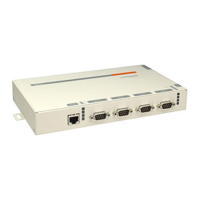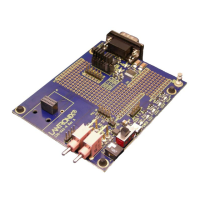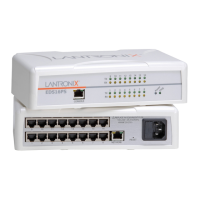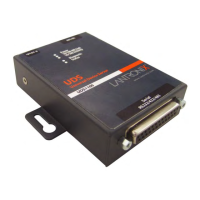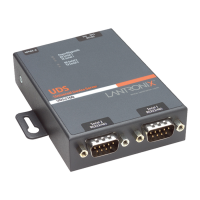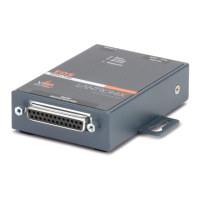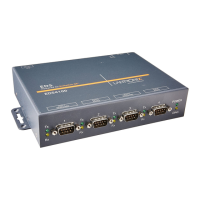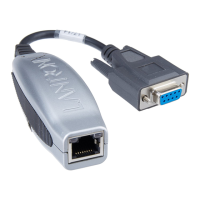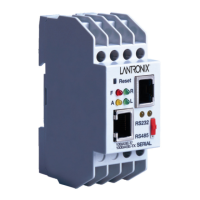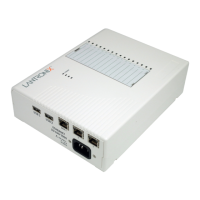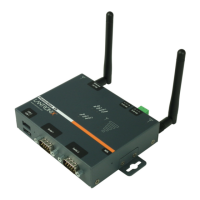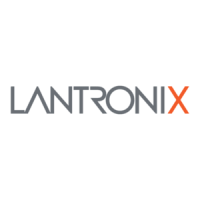Network Configuration Using a Hex File Supplemental Information
E-4
To request the setup record of a properly configured Device Server via another Device
Server on the network:
1 Configure a “master” Device Server with the desired parameters and place it on the
network.
2 Place another Device Server (the “target”) on the network. (Use the master and SC
“Send Configure” command to set the target unit.
3 Enter Monitor Mode (with network support enabled) on the target Device Server
(see Monitor Mode on page B-1).
4 At the prompt, enter GC x.x.x.x followed by a carriage return, where x.x.x.x is the
IP address of the master Device Server.
The master Device Server responds by sending its setup record to the target Device
Server, and the target Device Server reboots with the new configuration.
To build the setup record in software:
1 Create a 120-byte setup record.
2 Convert it to an Intel Hex record (see The Intel Hex Format on page E-5).
3 Copy the setup record into a text file and save it for future use.
To request the setup record of a properly configured Device Server via UDP:
1 Configure a Device Server with the desired parameters and place it on the network.
2 From a host PC, send the F8 datagram to the Device Server (see Network
Configuration Using UDP on page E-1). The Device Server responds with the F9
datagram, which includes its setup record.
3 Send a previously saved setup record from a host PC via UDP.
Sending a Setup Record
There are also a number of ways to send a setup record to a Device Server:
! Send a previously saved setup record via Monitor Mode (easiest method).
! Send the setup record of a properly configured Device Server to another Device
Server on the network.
! Send a previously saved setup record from a host PC via UDP.
